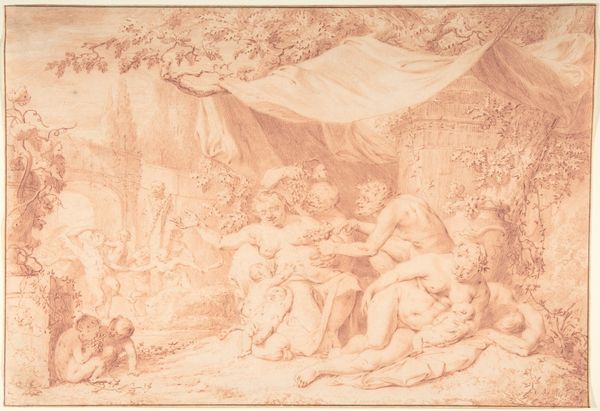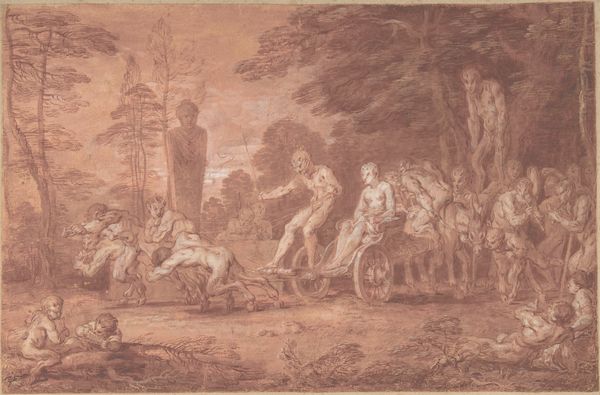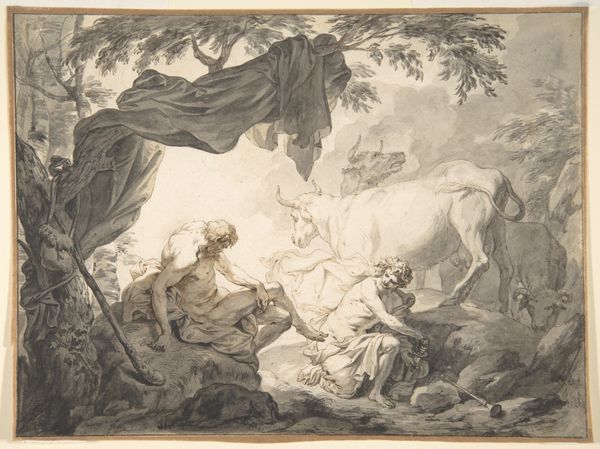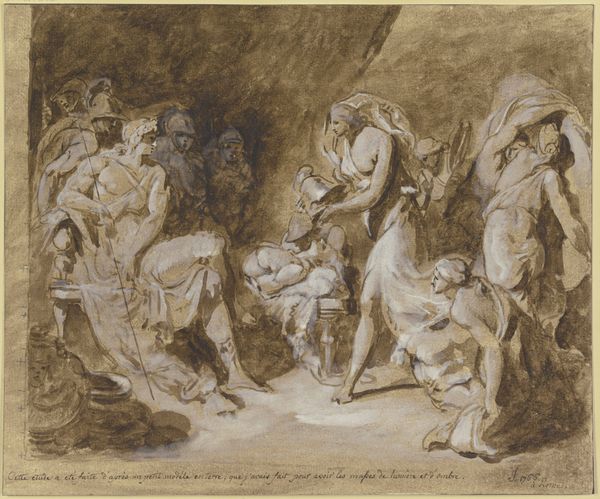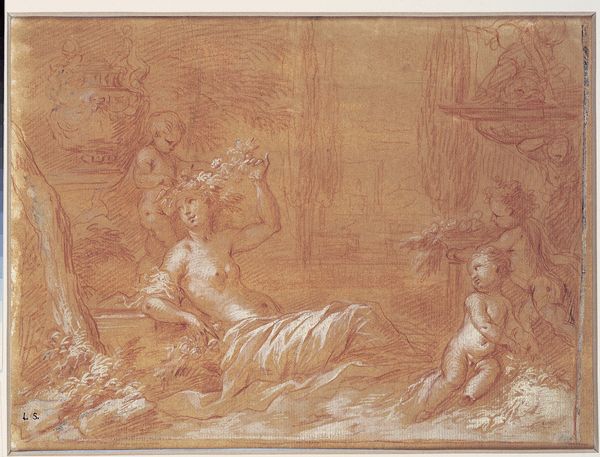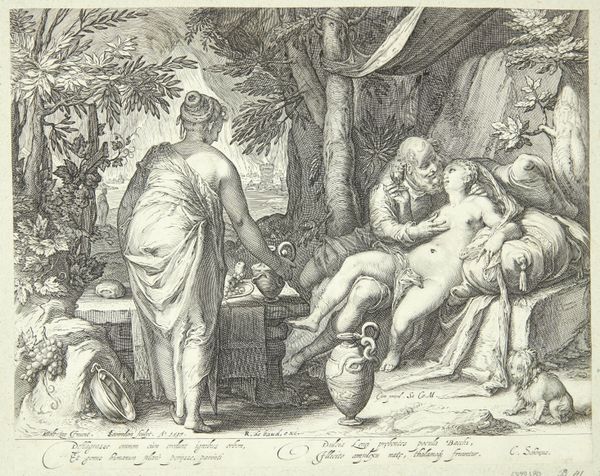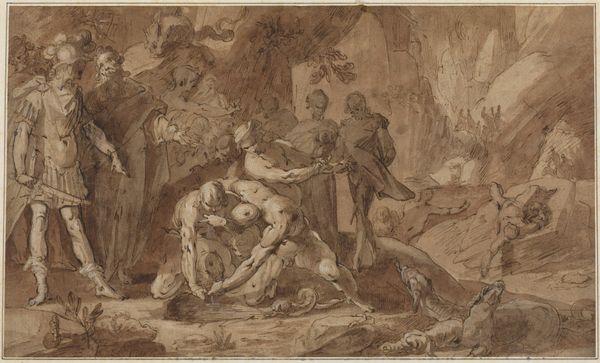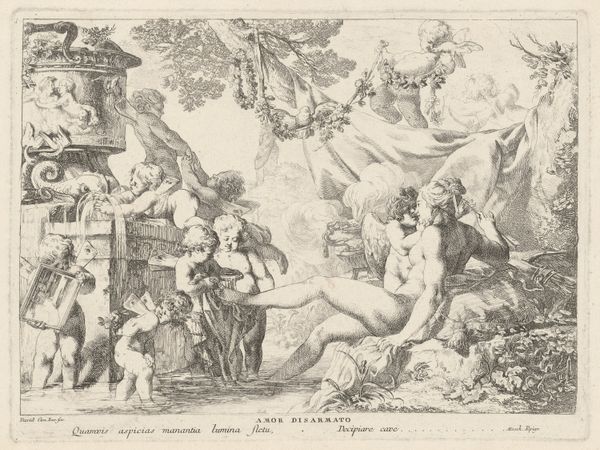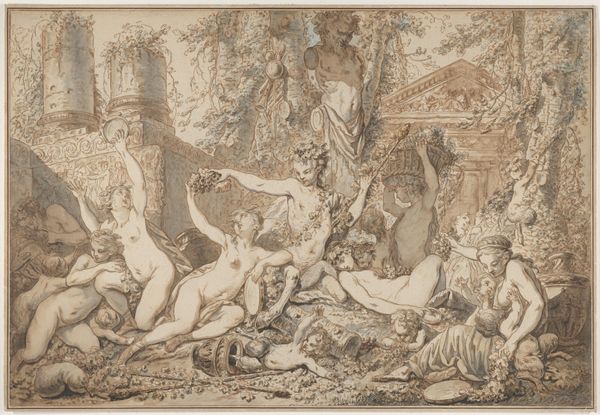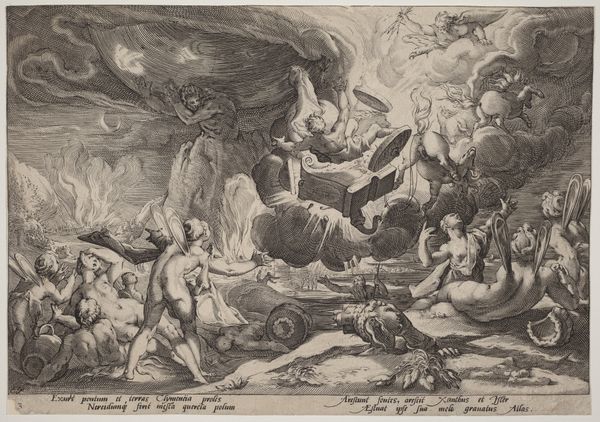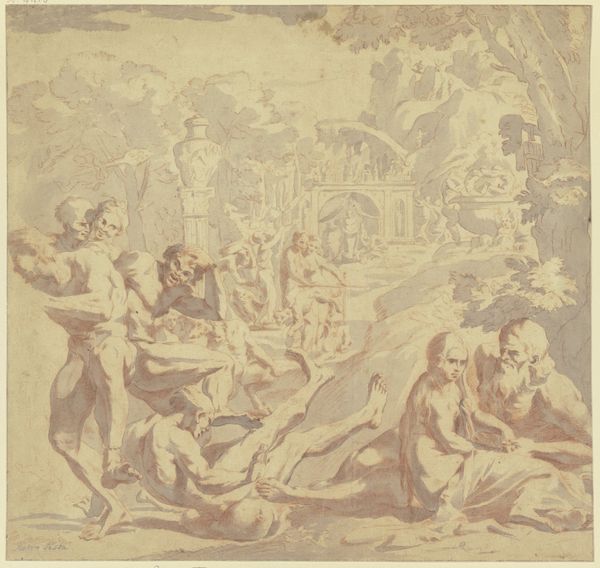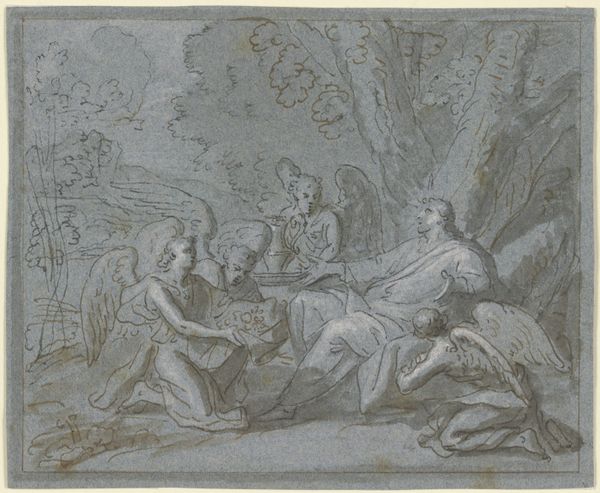
oil-paint
#
allegory
#
baroque
#
oil-paint
#
landscape
#
figuration
#
oil painting
#
history-painting
Dimensions: 55 cm (height) x 79 cm (width) (Netto)
Curator: Here we have Abraham van Cuylenborch's "Nymphs in a Grotto," an oil painting that's held at the Statens Museum for Kunst. He painted it sometime between 1635 and 1658. Editor: Well, my first thought? Slightly unsettling! There's this oddly lit grotto, ruins everywhere, and these rather languid nymphs in a sort of staged tableau. A theatrical dreamscape gone slightly awry, maybe? Curator: Yes, unsettling is a good word. Note how Cuylenborch layers classical ruins with the figures, placing them both within the context of the grotto. This alludes to the idea of cultural memory, contrasting civilization and nature. The nymphs themselves become allegorical figures. Editor: The light's interesting, isn't it? Almost spotlights the nymphs, yet it's a very diffuse, unnatural light for a cave. Like they're on stage, not just hanging out by some random pillar. And those architectural remnants look almost aggressively placed, don't they? Not overgrown, but sort of... posed. Curator: Absolutely, and the poses, their arrangement within this landscape, certainly evoke classical allegory. We see symbols here - a toppled column symbolizing loss and perhaps a different state of time, for example - all within a classical context, of course. But there's also a slightly subversive air to Cuylenborch’s art; what kind of new classicism might emerge after ruins? Editor: New classicism or the shadow of the old? That melancholic mood clings, I think, perhaps warning of how things decay even in supposedly ideal pastoral landscapes. It definitely gets you thinking, even while being undeniably… beautiful? Eerily beautiful, yes, that works. Curator: The Baroque was filled with many ambiguities. Cuylenborch gives us pause and a reflection on nature and culture - even how art should work within them. It is about this dialogue after all. Editor: Indeed! It's certainly lodged itself in my mind; the composition, that odd lighting… a memory now, filtered through its slightly twisted classical lens. A fascinating slice of dream-history.
Comments
No comments
Be the first to comment and join the conversation on the ultimate creative platform.
